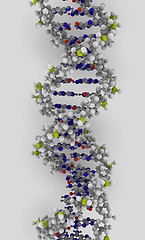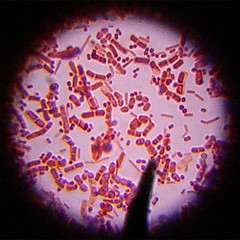Hi-ho, disruptive tech-development curve! Little chips that synthesise DNA strands faster and more cheaply than the standard extant procedures… anyone fancy formulating a Moore’s Law equivalent for synthetic biology?
Tian cites the recent cloning of the entire genome of a single bacterium, which took more than four years to complete and cost more than $40 million, as an example of the drawbacks of current technology. The new chip system would have reduced that to a small fraction of the time and expense, Tian says.
Gene synthesis involves a number of steps, including synthesis, purification, and assembly of oligonucleotides or oligos, short snippets of DNA, usually less than 50 base pairs. Each of these steps currently takes one to two days to complete. The new chip performs all three of these activities.
The chip itself has row upon row of tiny indentations, or wells. The biochemical equivalent of an inkjet printer shoots the desired DNA bases into each well. The bases assemble within the well and since it is a enzymatic reaction, harsh chemicals are not needed to release the DNA strand, as it done now, from the walls of the well.
“The chip basically combines the three steps into one, which can be completed in less than two days, and without all the labor currently needed,” Tian says. “Also, since the wells are so small, significantly smaller amounts of expensive chemicals are needed to run the reactions.”
 Rudy Rucker has been ruminating on synthetic biology in the wake of
Rudy Rucker has been ruminating on synthetic biology in the wake of  Wired does
Wired does  We’ve seen
We’ve seen  There was a
There was a